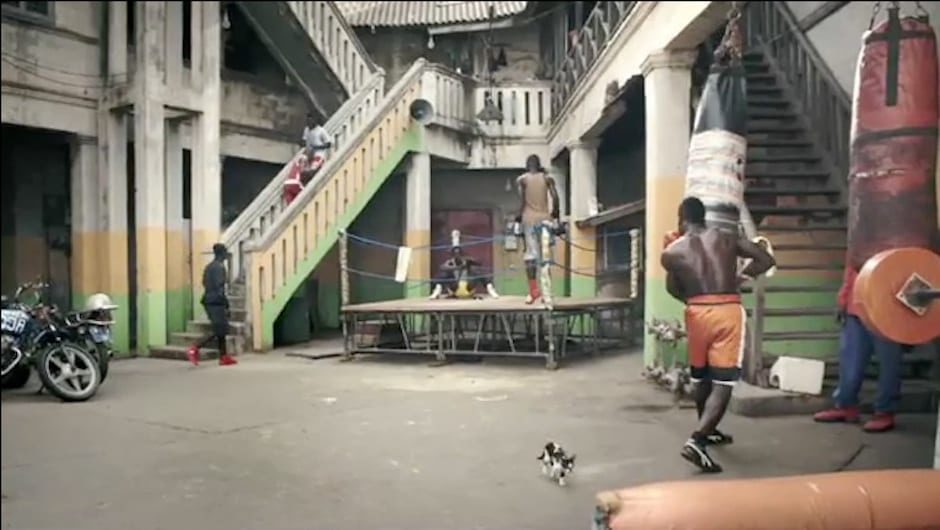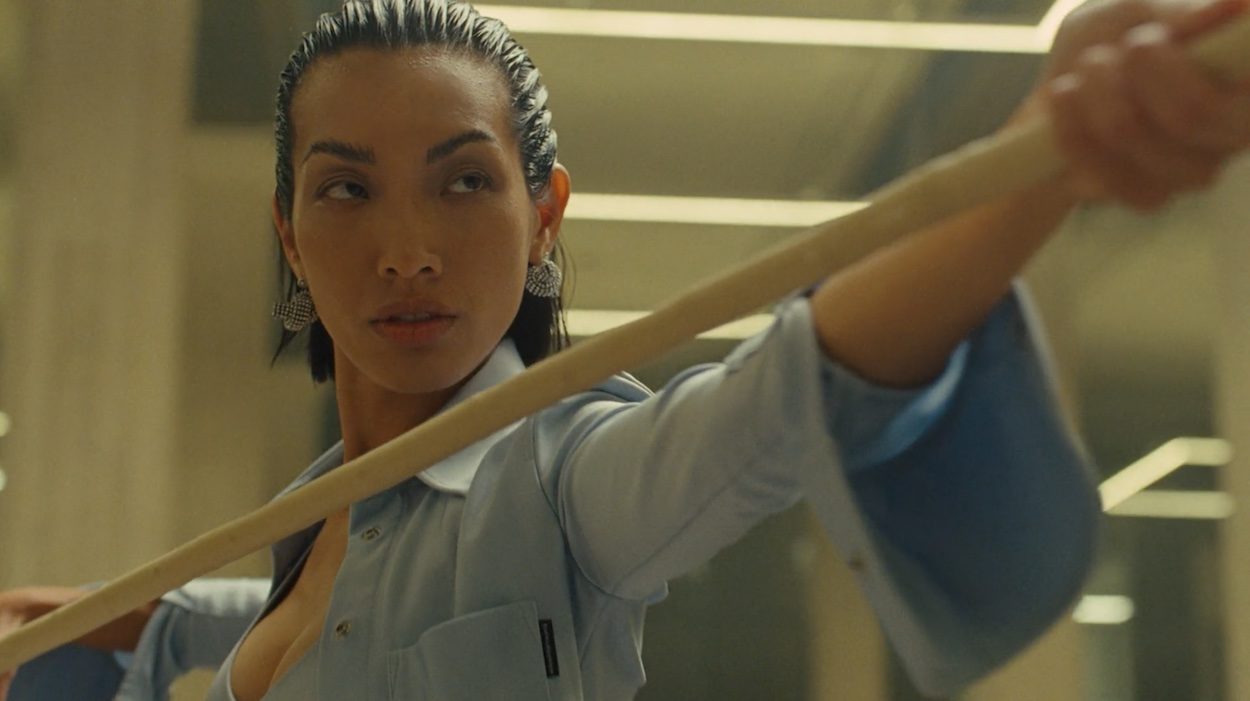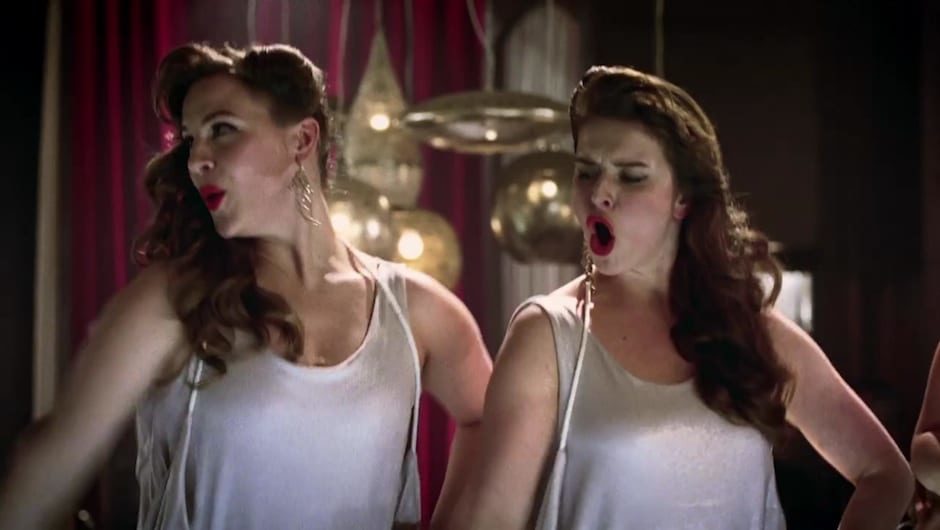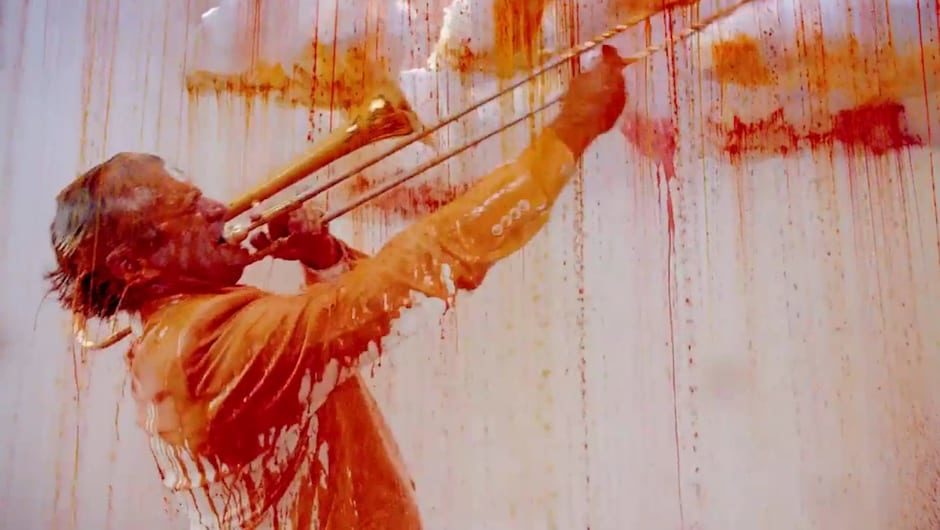What was the original brief – was it a detailed script with specific shots or was it left to you to evolve the narrative?
The brief was quite simple to start with, but grew and evolved throughout the process. Matt and Emiliano (creatives) were pretty clear about the mood and feel they wanted to get across, so that was a good starting point for me.
In fact the narrative is a splendid visual trip of characters and place – did it take lengthy scouts around the city to find the hairdressers, boxing ring, market scenes etc to create the scenarios?
One of the reasons I really liked this project was the challenge of creating a film with real authenticity, while trying to leave out the artificiality that can often overcome a project. We were looking for real places as much as we could but for various reasons we ended up building almost everything; the barber shops we found were too small so we had to build it in a warehouse. The boxing rings we found weren’t very interesting or wouldn’t work with the lighting, instead we found this great courtyard and built it in there. For the market/fashion show we moved a whole market and 300 extras to our location as we had to make sure that all the people appearing in it were contracted. Naia (the production designer) did a great job and so my biggest task was just to try to play with it in a way that the audience wouldn’t recognise it was a set build.
Love the twists in most scenes like the sing out at the boxing match, the stilt-man walking in reverse flow, the rooster echoed with the punk hair cut – how did these come about, was everything pre-planned or did some scenes evolve on the shoot?
We wanted to try and stay open to everything that would happen organically on the shoot, but at the same time you have to have a plan in case nothing happens. The scenes you have mentioned were storyboarded and planned… I think we ended up with something like 80% of things we planned for and about 20% of shots that evolved on the set. For example we had planned for the goats on the street to be in the set of club, but the guy who was doing the goat sound came for casting and did it as part of his own performance without me asking… I can imagine for some it may be too much, but since it was his own authentic thing, we put it in…
How did you set up that opening shot which immediately sets the context? Was the car driving into shot accidental or planned?
This was accidental. But the Smirnoff car on crossroad wasn’t:-)
How did you cast the film – did you take anyone from Europe?
I really liked that this project allowed me to meet and cast local people from the area we were shooting. We were looking for authentic rappers, musicians and visual artists from the local scene. We also did rounds with actors, pushing for authentic people and I was very happy with what we ended up with; Kazuka (the barber shop guy) and Quabene (the boxing ring rapper) are quite big names in that scene. The last main hero was an actor from Kenya. In Bangkok we ended up casting a real band with their own singer – she wasn’t just a death metal singer – that was her performance…
Was it a smooth shoot – any major challenges? What were the key differences about this shoot from any other?!
It was the craziest, most difficult and exhausting shoot I have ever experienced. Very intense and thanks to anti malaria meds I also managed to have some pretty interesting hallucinations… sometimes…
Where will the film be shown?
I think it will be in Africa and then global but I’m not sure – I think stinkers can answer that…
Anything else you’d like to share?
I would really like to thank the production people who made it happen and to the agency and client who were in this case exceptionally understanding – three days prior to the shoot, we didn’t have the barber shop, we didn’t have the final cast and I’m not even talking about wardrobe and art department! Since the creatives and client were really supportive and understanding, we really got to play with it till the last minute… it also makes you feel more responsible when there is a trust, on that level it was a really nice experience.














